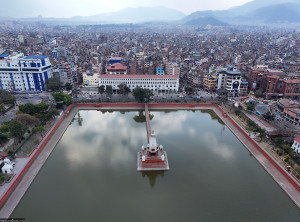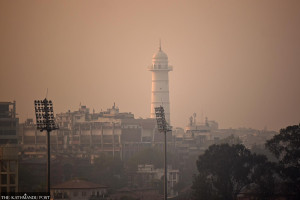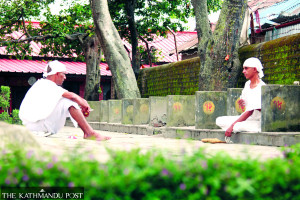Opinion
Schools of peace
Two Phidim schools are affirming themselves as zones of peace, free of political intervention and ideological politicisation
Isabelle Duquesne
Nanda Tal Tiwari, a journalist summarising his research in Doti and Achham in the Far West last year, confirmed that schools in the two districts were well underway to implementing the national framework and implementing guideline of ‘schools as zones of peace’ (SZOP). Goma Chhetri of Save the Children acknowledged that promises collected in 2012/2013 from the 15 major political parties to keep schools untouched by strikes or other disturbances had led to an increase of learning in peaceful environments.
In this context, I have been conducting observational studies in Phidim for the last three years. Two schools in particular have contributed to producing relevant data: one is the public Shree Phidim Higher Secondary School (Phidim HSS), the other is the private Mechi English and Boarding School.
Public Phidim
Phidim HSS, established in 1948, is close to the bazaar, the busy town hub currently witnessing private and business construction works, as well as the expansion of the water supplies (a long-pending Asian Development Bank-funded project). Principal Pushpa Prasad Bhandari, English teacher Harichandra Lawati and the body of teachers have been supporting a longitudinal study on the state of peace in the school. Short surveys are filled in by parents, pupils and teachers. The results have indicated that, on a whole, the school environment is peaceful.
On a peace scale of 1 (low) to 5 (high), pupils gave an aggregated score of 3.8 to the question: “After a fight, teachers explain to students how to solve problems at school so that students learn.” Teachers gave an aggregated 4.2: “As a teacher, I am happy to come to school. I feel included in the teachers’ community and useful for the students’ future.” Parents gave an aggregated 4.1: “I notice that my child is receiving peace education at school.”
Some discrepancies among answers point to ways of possible improvement. To the question whether boys tend to harass girls, pupils gave an aggregated 3.5 (out of 5) and teachers a 2.5. This suggests a need for adults to increase their awareness of the psychological reality of girls in the social environment of the educational establishment. Some teachers’ answers regarding the causes for lack of peace also point to the routes for optimisation: students’ destructive behaviour; lack of moral education; home environment; need for more flexibility from school administration; and national situation of the country. These statements are indicators for optimised work in concretely defined educational and societal areas. To ensure statistical significance, this data is reiteratively followed over three years and also includes feedback from the School Management Committee.
Despite low budget and political instability, Phidim HSS has been actively conducting English-medium classes for 158 pupils in pre-primary classes 1-3 and secondary classes 8-10. For the time being, classes 4-7 are conducted in Nepali. Higher secondary classes 11-12 provide commerce and management in English and Nepali and science in English only. Altogether, 214 primary, 251 lower secondary and 107 secondary school-goers make up a student body of 572.
Today, one can observe ease and friendship in the schoolyard. As the psycho-social environment increasingly sustains its peace-ability, it is the class management of students’ intellectual and cognitive capacities through varied teaching methods that become the next priority. Phidim HSS is intent on achieving higher SLC pass percentages very soon.
Private Mechi
Mechi School (established 1939) is an English boarding school, situated on a hill overlooking the town. This ancient site was used as a point of defence against Gurkhas or other enemy Kirants. Limbu forts (gadis) served for strategic warfare, peace treaties and worship. History tells of 10 Limbu tribes, who, after a long period of quarrelling, united at the Phidim Gadi by performing the ceremony of compromise and reconciliation—a ritual with soil, grass, water and stones. Today, it is a temple with majestic trees, meaningful stones, colourful banners and all-sizes of bells—next to the statue of Phalgunanda, the revered Limbu guru.
The Mechi school also houses a small manghin (Limbu for temple). At times, it feels like the whole school has a spiritual character, maybe revealing the mission of Limbu principal Sita Selling to merge the English medium, intellectual effort and modernity with a local and cultural consciousness of place and time.
The school agreed to participate in a three-year experiment to deepen the reality of peace in the day-to-day lives of pupils, teachers and parents. It was agreed that each teacher, on a regular basis, would link their topic (biology, mathematics, chemistry, Nepali, etc.) with concrete examples of peace. The creative implementation was left to every teacher to do as they saw fit. This commitment is proving successful. The atmosphere between students has deepened in positivity and adult-centered conflicts (between teachers and school management) are now resolved in open dialogue. All have benefited from this injection of daily awareness.
The school has 750 students, 30 of whom are boarders. Thirty-three students of class 10 passed their SLC last year, making Mechi the only school in Panchthar with 100 percent SLC success. When asked about the new frontier of peace-making, Selling speaks of her concern at seeing some young citizens in the municipality ruin their mind, their health and their future by consuming large quantities of alcohol.
A national agenda
A school as a Zone of Peace may counteract personal early tendencies within its walls; the next level, however, would better be served by “Towns as Zones of Peace”. This lies within the parameters of good governance and the creation of opportunity, which are on the agenda of future democratically elected local governments.
This research work in Panchthar does not stand alone. Lava Aswathi, Director General of the Department of Education and Chairman of the Central Coordination Committee of SZOP, pointed out : “First, we had to protect the children from harm during the conflict, then we had to ensure their undisturbed attendance at school in the immediate post-conflict events, now we need to create a culture of peace at the heart of schools”.
This is exactly the agenda of Gyan Mani Nepal, Panchthar District Education Officer: “Already 39 VDCs have been declared SZOP and soon the whole district will be a ZOP whereby children attend school no matter the political events surrounding them. I have the support of all the leaders now”. The educational officer points out that SZOP is not just about keeping schools open in case of strikes; it is a commitment by School Management Committees, guardians, teachers, older students and groups external to schools to refrain from any kind of political intervention or ideological politicisation.
SZOP is the national mandate to implement child’s rights in each school by creating a child-friendly environment and eradicating detrimental behaviours such as sexual harassment or corruption within school-related processes. “There are two more VDCs to go,” says DEO Nepal, “Phidim and Bharaba. Then all 41 VDCs will act with the commitment and the awareness of peaceful teaching and learning”.
Duquesne, author of ‘Nepal—Zone of Peace’, has been conducting research in Mechi. Duquesne suggests the inclusion of ‘Zone of Peace’ in the future constitution of Nepal.




 22.97°C Kathmandu
22.97°C Kathmandu










